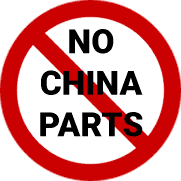Blog
What Are Common Types of Sleeve Bearings and How Are They Repaired?
What Are Common Types of Sleeve Bearings and How Are They Repaired?
While bearings are critical components in vital aviation systems, they account for about 51% of all electric motor failures. They play the important roles of guiding and constraining motion, reducing friction, and providing support, so failure(s) can occur in many forms and have various detrimental effects. Failures vary by bearing type and function, but typically include normal wear and tear, lubrication issues, contamination, or electrical damage that affects bearing surfaces. As many of these issues are preventable, this blog will further explore the different types of sleeve bearings, their applications, and how to avoid bearing failure through repairs and routine maintenance.
The most common type of bearing one will come across are roller element bearings, but most larger engines, such as those used for aviation purposes, rely on sleeve bearings because of their longer lifespans. Sleeve bearings are cylindrical and straight, and they are designed to work with linear, rotational, and oscillating motion. Also known as bushings, plain bearings, or journal bearings, sleeve bearings are frequently self-lubricating, and like any bearing, they facilitate the motion between two components. With a bearing surface and a mating component for containing the shaft and connecting the bearing to its housing, sleeve bearings will last longer when there is proper clearance between connecting parts.
Bearing to shaft clearance refers to the space within the bearing where the shaft sits. This space must account for many factors to provide the ideal amount of clearance. Some rules to keep in mind for determining proper clearance is to note whether the shaft is horizontal or vertical, as well as the ratio of the length to the diameter of the bearing hole. Additionally, it is important to calculate the amount of weight the bearing will be responsible for holding and the peripheral speed at which the shaft journal will travel during operation. Lastly, one should check the oil viscosity of the lubricant and the load. All of these factors determine how much clearance is required within the bearing, and too much or too little clearance can impede function. For high torque and heavy rotors, the diameter of the clearing should be larger to accommodate a bigger shaft. On the other hand, faster speeds demand bearings with smaller journal diameters. Meanwhile, bearing to housing clearance refers to the distance between the exterior of the sleeve bearing and its housing component, as the coefficients of thermal expansion between the different materials make up a functional sleeve bearing.
When accounting for the various functions of a sleeve bearing, one of three options often fit the requirements. The most commonly used sleeve bearing is the flanged bearing, which handles axial and side loads well. This design has a flat, outward-reaching top, unlike the alternative cylindrical bearing, that of which is shaped resembling a short, hollow tube. When paired with a washer, these parts work better for higher loads. However, for applications where the load is purely radial, a cylindrical bearing should be used on its own.
When procuring a sleeve bearing, it is also important to note the material it is made from. In general, either TFE, cast, or sintered metal should be used rather than plastic, as there are many drawbacks to plastic sleeve bearings. Luckily, most contain PTFE and are self-lubricating, which both ensures smooth operation and extends the bushing’s service life. Of course, even with self-lubricating bearings, additional lubricants assist in preventing wear. In fact, most issues with sleeve bearings can be handled or repaired without requiring replacement.
One common example of a repairable mistake is an improper clearance. An adjustment can be made in this instance to fix issues of vibration or insufficient lubrication. Interestingly, most issues can be fixed with added lubrication. In other instances, the material of the bearing might need to be replaced through spin or centrifugal casting. Guides and wipers can also be integrated into the bearing to help keep oil better distributed. If oil recovery is a problem, then an end seal and a drain groove can be added. In particular, labyrinth seals are a wise choice for most sleeve bearings. Lastly, it is important to keep an eye out for leaks or electrical issues.
As there are many types of issues that a sleeve bearing can face, understanding repair techniques and purchasing proper bearing types can prevent failures. Luckily, many signs of wear can be repaired, and ASAP Parts Services is here to help you procure everything you need for bearing parts today! Owned and operated by ASAP Semiconductor, we are a leading online distributor of aircraft engine control parts offering rapid lead times and competitive pricing. To learn more about our products and services or to browse our ever-expanding inventory of high-caliber components, peruse our highly organized website, complete with a search engine and filter options. Then, kickoff the procurement process by submitting a Request for Quote (RFQ) form, complete with details like desired quantities, shipping deadlines, and price ranges. For further inquiries, contact us at any time via phone or email; we are available to help around-the-clock, 24/7x365!
-
henry fayol
-
Posted on July 27, 2022
- bearings

